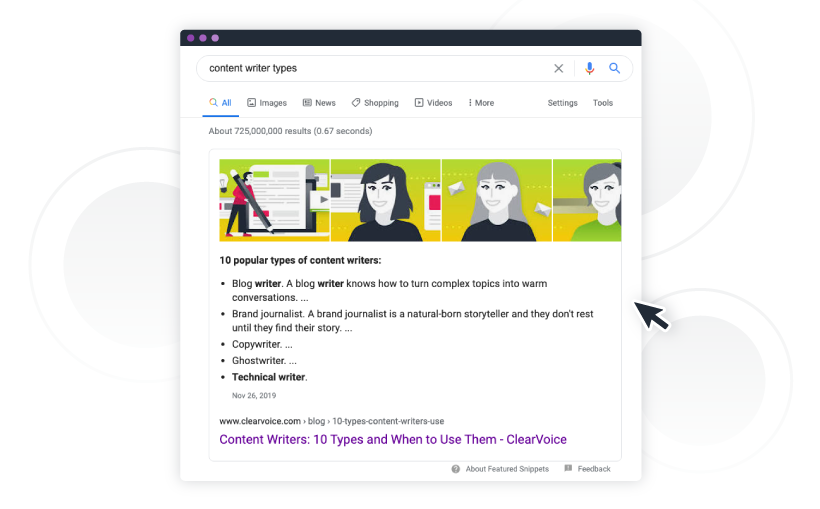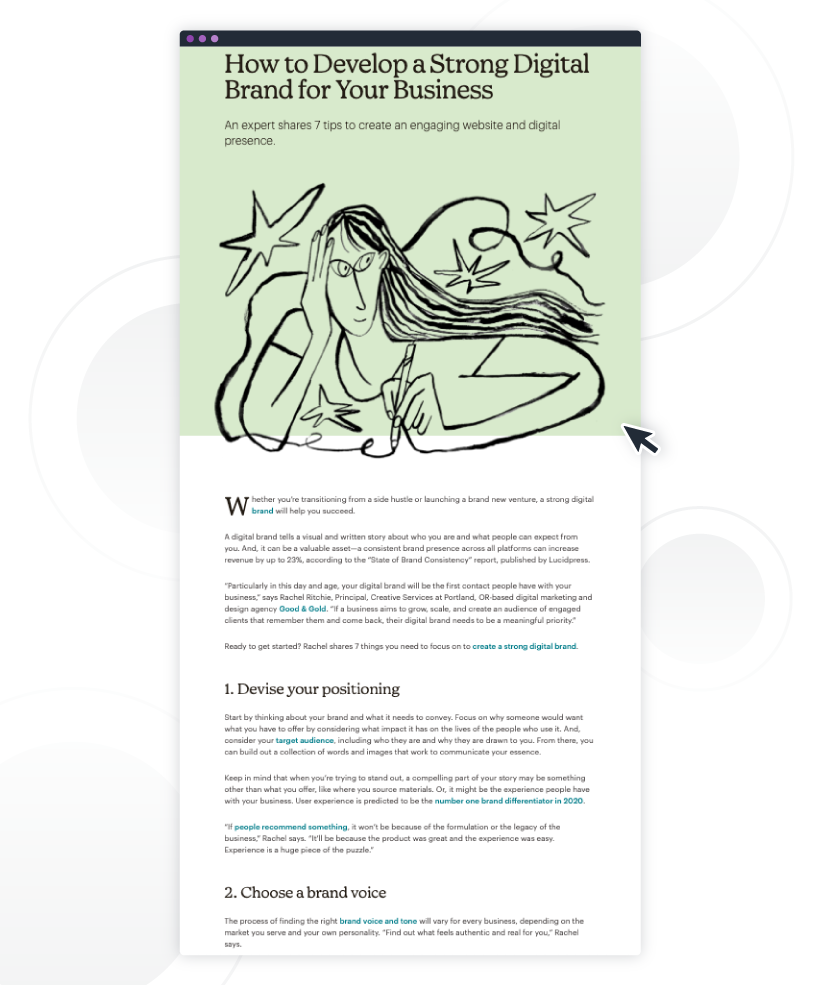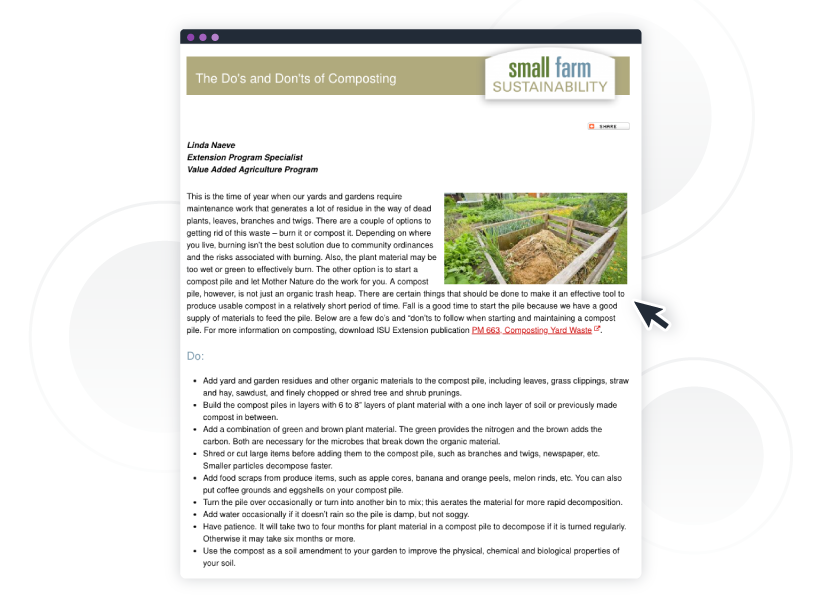Two things likely happened when you decided to click and read this piece about parallel structure. You either had a flashback to daydreaming at your crappy little desk in English class or you flew through your brain files in a frenzy to try and remember the definition of parallel structure — and you’re here because you’re at a loss.
Content creators are masters of all things messaging, but sometimes we forget to follow important grammatical cues. Or, maybe we’re following these cues unknowingly and we can do a better job being consistent and purposeful as we use these techniques.
Parallel structure brings more power and precision to your content. From SEO to marketing copy, focusing more energy on parallelism is a smart move. Let’s nerd out on parallel structure together to help you sharpen your messaging tools.

What is parallel structure?
Parallel structure is a writing technique that uses word patterns to demonstrate equal importance of two or more similar items or ideas. All elements are described in the same grammatical context, making the message easier to read and understand.
Parallel structure is sometimes confused with repetition. However, the writer repeats word patterns, not necessarily the words themselves. Parallel structure is also called parallelism, parallel form, and parallel construction.
If we journey back to English class, you’ll remember seeing parallel construction used in some of these profound messaging moments in history.
‘A Tale of Two Cities’ by Charles Dickens
“It was the best of times, it was the worst of times, it was the age of wisdom, it was the age of foolishness, it was the epoch of belief, it was the epoch of incredulity, it was the season of Light, it was the season of Darkness, it was the spring of hope, it was the winter of despair, we had everything before us, we had nothing before us, we were all going direct to Heaven, we were all going direct the other way.”
‘I Have a Dream’ by Dr. Martin Luther King Jr.
“I have a dream that one day this nation will rise up and live out the true meaning of its creed: ‘We hold these truths to be self-evident; that all men are created equal.’ I have a dream that my four little children will one day live in a nation where they will not be judged by the color of their skin but by the content of their character. I have a dream today.”
‘How Do I Love Thee’ by Elizabeth Barrett Browning
“How do I love thee? Let me count the ways.
I love thee to the depth and breadth and height
My soul can reach, when feeling out of sight
For the ends of being and ideal grace.
I love thee to the level of every day’s
Most quiet need, by sun and candle-light.
I love thee freely, as men strive for right.
I love thee purely, as they turn from praise.”
Why is parallel structure important in content marketing?
Fast forward to the present day and you’re wondering how the works of famous authors, leaders, and poets relate to that how-to blog you’re working on right now. The impact of parallel structure was just as powerful then as it is today.
You create a lot of content, right? You want that content to resonate with your audience… but what does “resonate” really mean? We can go deep into the psychology of content marketing, analyzing our content through the lens of buyer personas or buyer stages. Also important is what’s happening on the surface — the words on the page.
Sure, your writing is better when you use parallel structure. But, incorporating parallelism also supports consistency, reinforcement, scannability, comprehension, and SEO.
Consistency
Parallel structure is essential for communicating value props consistently. A value proposition summarizes how you will deliver your brand promise and how your offering will deliver value to your customers. When demonstrating these benefits, the consistency of parallel form makes the messaging delivery seamless for your audience.
Reinforcement
Patterns that come with parallel construction make it easier for your audience to remember your content. As content marketers, we are forever looking for ways to reinforce our messaging so that the message actually sticks. When you use parallel structure, you are not repeating yourself but you are emphasizing points by repeating the grammatical structure.
Scannability
A lack of parallel structure creates a clunky user experience because the messaging is disjointed. Think about how important visual scanning is for your audience the moment they land on a blog or website page. People don’t spend time absorbing every last content detail. Use parallel structure to improve scannability so people quickly understand key points.
Comprehension
With parallel structure, increased comprehension comes from an increase in readability. By creating word patterns that are easily understood, you decrease the friction between your message and your audience. It’s the same reason we choose easy-breezy contact forms. The goal is always to minimize friction and parallel construction is a useful technique.
SEO
Google loves lists and so do content marketers. To win featured snippets for specific search terms, bulleted or numbered lists are a popular content creation tactic. Parallel structure turns messaging into clear patterns. When someone is searching for an answer to a search query and your content offers the clearest explanation in a featured snippet, they will click and engage.
To see a parallel structure example that worked to win featured snippets, check out this ClearVoice piece, 10 Types of Content Writers and When to Use Them. It landed snippets for several keyword phrases.
What are the rules of parallelism?
When content works, it just works — well, there’s a lot more to it than meets the eye. People expect the ease of patterns when they read content. When that pattern is broken, it creates a disruptive reading experience.
Parallel construction is all about mastering patterns, so it helps to understand the different types of parallel structure and a few things to avoid.
Types of Parallel Structure
When you make comparisons between several items or ideas, these are the main types of parallel structure.
- Coordinating conjunctions (for, and, nor, but, or, yet, or so) — Our customers can leave reviews on Google or Facebook.
- Correlative conjunctions (not only… but also, either… or, neither… nor, if… then) — Our content team not only excels at content creation, but also at content distribution.
- Phrases or clauses of comparisons (than, as) — Our recent survey shows our customers would prefer getting an email rather than receiving a text promo.
- Sentence lists (item comparison separated by commas) — Our content team excels at writing, editing, optimizing, and distributing content.
- Non-sentence lists (item comparison separated by line breaks or columns) — Most commonly used in content marketing as bullets or numbered lists. This list is an example of parallel construction where each sentence begins with plural nouns.
What to Avoid with Parallel Structure
When parallel structure fails, the reading experience is disrupted and the reader might physically cringe. Jarring your audience is the last thing you want with content, so avoid these missteps with parallelism mechanics.
- Repeating words instead of repeating patterns.
- Mixing and repeating prepositions (with, to, of, over, under, by).
- Breaking patterns (i.e. noun, verb, noun, noun or verb, verb, participle)
- Switching between active and passive voice.
- Interchanging singular and plural nouns.
- Bouncing around with positive and negative statements.
That bulleted list you just read? This is an example of parallel structure. I started each sentence with an -ing verb and stayed focused on “what NOT to do.”
Here is the same list with a broken parallel structure, with changing verbs at the beginning of the sentence.
- Repeat words instead of repeating patterns.
- Mixing and repeating prepositions (with, to, of, over, under, by).
- Break patterns (i.e. noun, verb, noun, noun or verb, verb, participle)
- Switching between active and passive voice.
- Interchange singular and plural nouns.
- Bouncing around with positive and negative statements.
Yet again, here is the same list with a broken parallel structure that flip-flops between positive (yes) and negative (no) statements.
- Repeating patterns with related items and ideas.
- Mixing and repeating prepositions (with, to, of, over, under, by).
- Keeping all elements the same (i.e., all nouns or all -ing verbs)
- Switching between active and passive voice.
- Sticking with singular or plural nouns.
- Bouncing around with positive and negative statements.
In this slight variation of the list, numbers 1, 3, and 5 were changed to do (yes) statements, while numbers 2, 4, and 6 stayed as don’t (no) statements. Instead of being all dos or all don’ts, the reader has to work much harder by going back and forth (don’t, do, don’t, do, etc.).
Now that you’re done reading these broken parallel structure examples, simply pause and observe your reaction. Do you want to throw something across the room? Or, did you already throw something across the room? There’s something about messing up parallel structure that really messes with the reader’s head… you’re welcome.
Parallel Structure Examples in Content Marketing
As great as it is to see parallelism reflected in literature, speeches, and poetry, you’re here because you create content, and you want to create better content. Take note of these parallel structure examples from content marketers who are using this technique to make their content more powerful and precise.
Parallel Structure Example: Consistent Grammar
How to Develop a Strong Digital Brand for Your Business by MailChimp
Parallel Structure Example: Consistent Theme
The Do’s and Don’ts of Composting by Iowa State University
Parallel Structure Example: Consistent Grammar
Content Strategists Website Page by ClearVoice
Patterns make your content more complete, and your audience expects that. Parallel structure is fundamental for better writing, but it’s also a way to increase reader satisfaction. How your words are connected impacts how your audience connects with your messaging.
The goal is not just to write sentences and bulleted lists… but to bring more connectivity and ease. With clear writing, you’re giving your audience an unobstructed path to engage with your content.










